04. Working with Shell - II
 Arindam Baidya
Arindam Baidya
Viewing File Size
du -sk test.img **du (**disk usage) command to inspect file size. Here, ‘-sk’ refers to size in kilobytes.
du -sh test.img prints the size in human readable format.
ls -lh test.img long list to print the size of a file in human readable format.
Tar (Tape archive) is used to group multiple files or directories into a single file. Hence, it is especially useful for archiving data. Files created using tar are called Tarballs.
tar -cf test.tar file1 file2 file3 -c stands for create an archive, -f stands for specify the name of the tar file to be created.
tar -tf test.tar -tf option followed by the tar file name is used to see the content of a tarball.
tar -xf test.tar -xf flag is used to extract the content from the tarball.
tar -zcf test.tar file1 file2 file3 -z command to compress the tarball to reduce its size.
Compression
Compression is the technique used to reduce the size consumed by a file or a data set. For example, to reduce the size of a file or directory on the Linux file system, there are commands which are specifically used for compression.
bzip2 test.img output: test.img.bz2
gzip test1.img output: test1.img.gz
xz test2.img output: test2.img.xz
Uncompressing
bunzipx2 test.img.bz2
gunzip test1.img.gz
unxz test2.img.xz
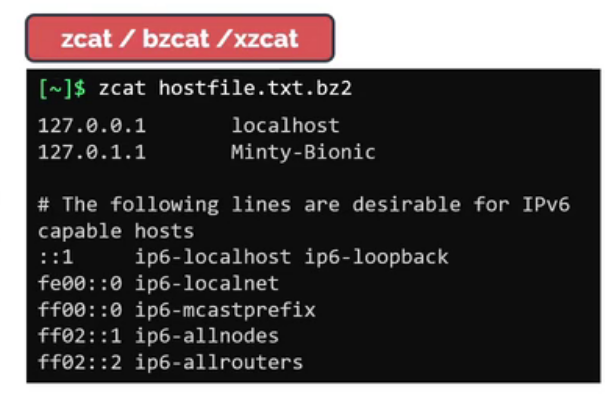
Tools such as zcat, bzcat, and xzcat allow the compressed files to be read without uncompressing them.
Searching for Files and Directories
locate City.txtreturn all paths matching the pattern. Useful to find files quickly in the Linux system.
The downside of the command is that it depends on a database called “mlocate.db” for querying the file name.
To manually update the db, run
updatedbas root user.
find /home/arindam -name City.txtUsing find command in the desired directory/directory path under which you want to search.
- To search for a file by name, use -name option and then name of the file.
- To search within files, the most popular command in Linux is grep. It is commonly used to print lines of a file matching the pattern.
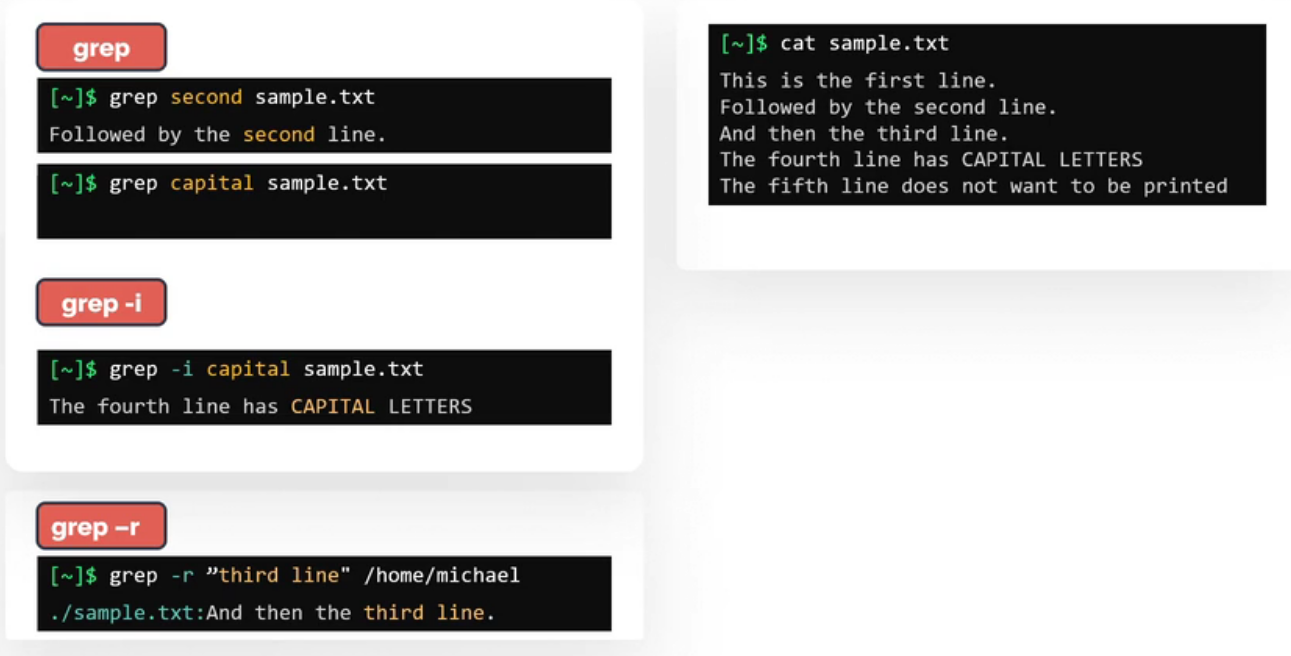
When we used capital in lower case, grep couldn’t find it from the file sample.txt. Because it is case sensitive. But to make it case insensitive, need to use ‘-i’.
When we don’t know which file contains our desired line or word, it can be found by grep using ‘-r’.
When we want to do opposite, print the line of the file that don’t match a pattern. For that we use ‘-v’ option.
grep -v “printed” sample→ This will print all lines that do not contains a particular string.When we want to match a pattern (part of word) that forms whole words:
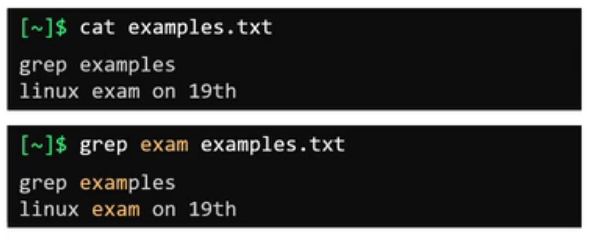
The first line contains a part of the pattern we are looking for, which is the word ‘exam’. So we got both the lines in output screen.

To search for whole word (only that word) called ‘exam’. use
grep -w exam examples.txt
All line of the same file that does not match the whole word ‘exam’
‘-A’ and ‘-B’ flag can be used to print a number of lines after and before matching the pattern.
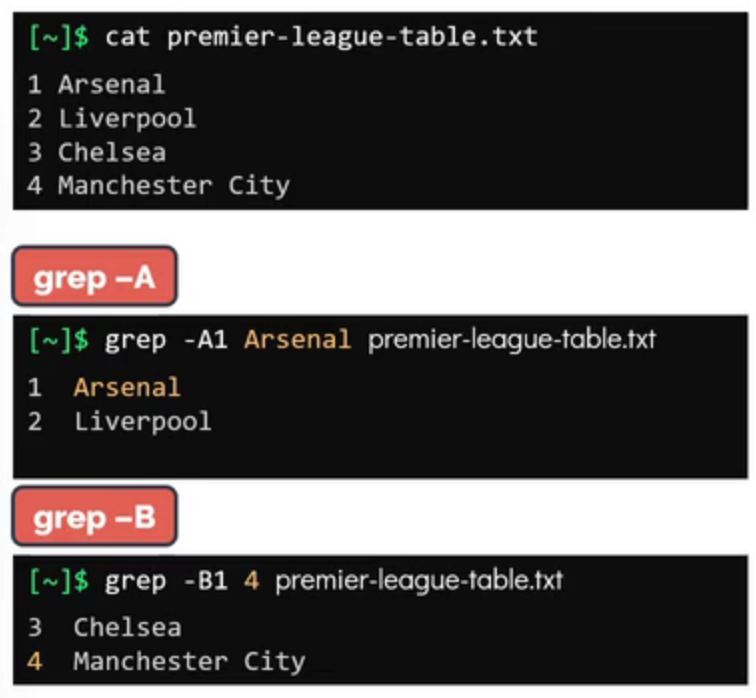
Here, -A1 represent the number of line (we can use any integer value we want in the place of ‘1’). Similar for ‘-B’.

Can be use both -A and -B at once in a same file.
Standard Streams in Linux
There are three data streams created when we launch a Linux command.
stdin is the standard input stream. This accepts text as its input.
stdout is the standard output stream. Text output from the command that prints on the screen.
Error messages from the command as sent through standard error stream with IO redirection.
IO Redirection
Standard input-output and error can be redirected to text files.
To redirect standard output to a file instead of printing it on the screen, we can use forward arrow (>) symbol followed by the name of the file.
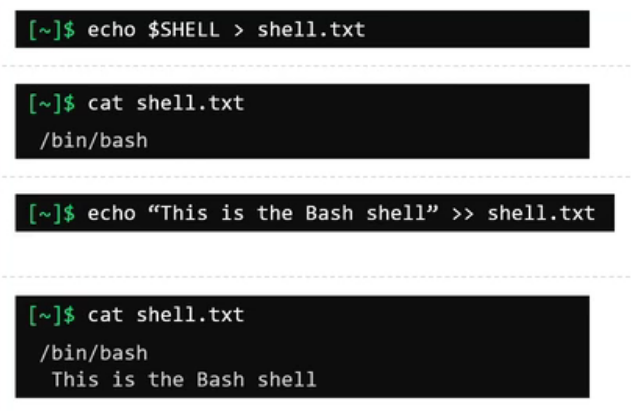
Single forward arrow (>) used to overwrite the content, whereas double forward arrow (>>) use to append on a existing file.
In order to redirect the error message need to use the number 2 followed by the forward arrow symbol and then name of the file in which the error will be written.
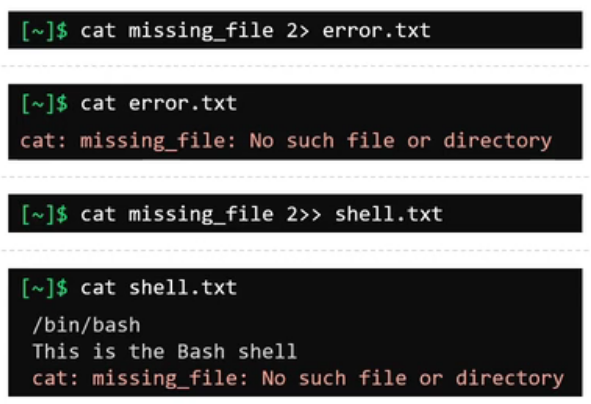
If we want to execute our command and not print the error messages on the screen, even if it generates a standard error.

We can redirect it to
/dev/null. It is a place like bit bucket. The place where we can dump anything we don’t need.
Command Line Pipes
Pipes allow the first command's standard output to be used as the standard input for the second command.
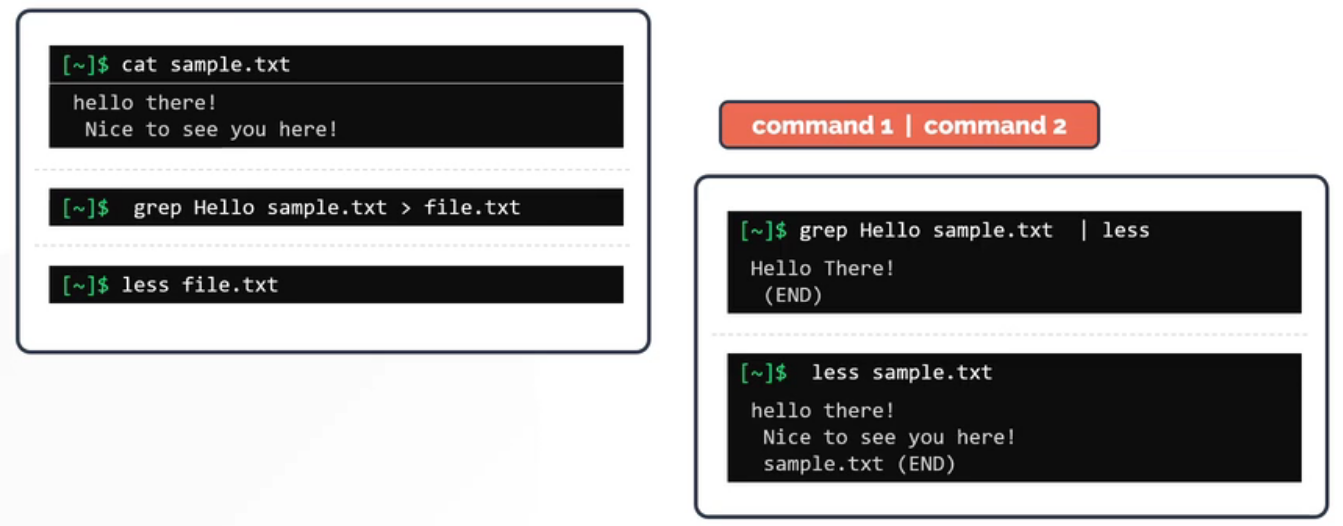
Tee
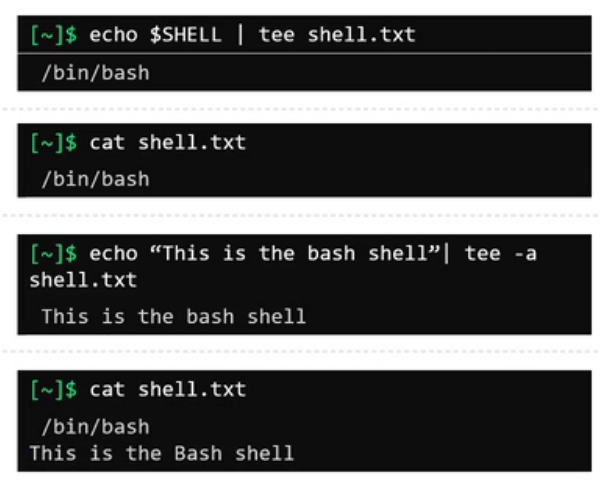
Instead of using the redirect operator (>/>>), we can use tee with a pipe (|). The only difference is that the output will be printed on the screen before overriding the content of the file with the same string.
- only
teeuse to overwrite whereastee -ause to append the output.
VI Editor
There are three Operation modes present in the VI editor.
Command mode
Insert Mode
Last line mode
When the editor opens a file, it always goes to the command mode first by default.
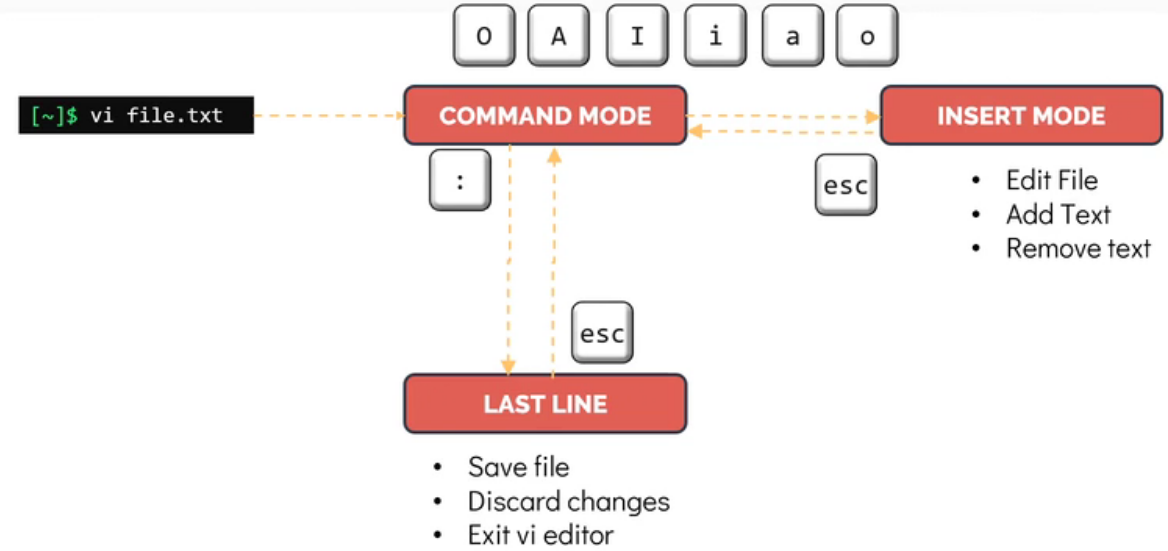
Command Mode
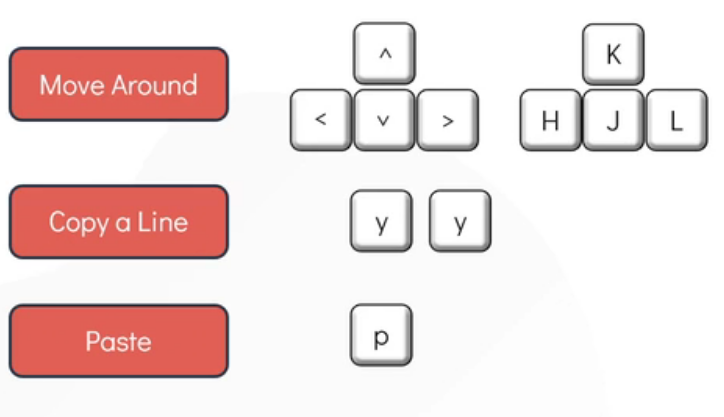
Additional → Z Z to save the file.

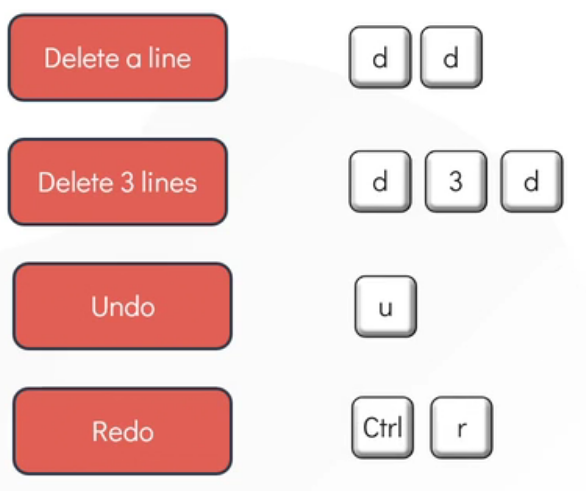
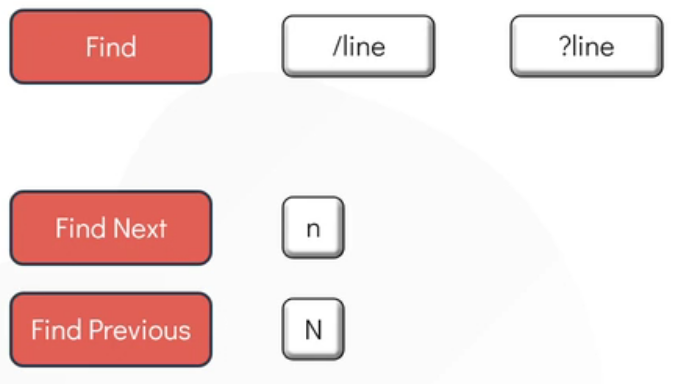
For ?line perform the same task in reverse order. where ‘n’ use to find next in upward, and ‘N’ use to find next occurrence in downward.
Insert Mode
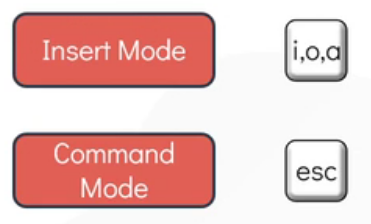
In place of lower case ‘i’, ‘o’, and ‘a’, we can use upper case ‘i’, ‘o’, and ‘a’.

‘:q!’ is without saving and exiting.
VIM
It is the improved version of the VI editor.
All we learned in VI can be applied to VIM.
In most distros today, VI is a symbolic link or a shortcut to the VIM editor.
To check differences b/w ‘vi’ and ‘vim’, you can use man pages.
Or, check within VIM → open a fil using VIM <file> → type :hvi-differences
To check the default editor configured in the system: update-alternatives --display editor
References
Subscribe to my newsletter
Read articles from Arindam Baidya directly inside your inbox. Subscribe to the newsletter, and don't miss out.
Written by
Arindam Baidya
Arindam Baidya
🚀 Aspiring DevOps & Cloud Engineer | Passionate about Automation, CI/CD, Containers, and Cloud Infrastructure ☁️ I work with Docker, Kubernetes, Jenkins, Terraform, AWS (IAM & S3), Linux, Shell Scripting, and Git to build efficient, scalable, and secure systems. Currently contributing to DevOps-driven projects at Assurex e-Consultant while continuously expanding my skills through hands-on cloud and automation projects. Sharing my learning journey, projects, and tutorials on DevOps, AWS, and cloud technologies to help others grow in their tech careers. 💡 Let’s learn, build, and innovate together!